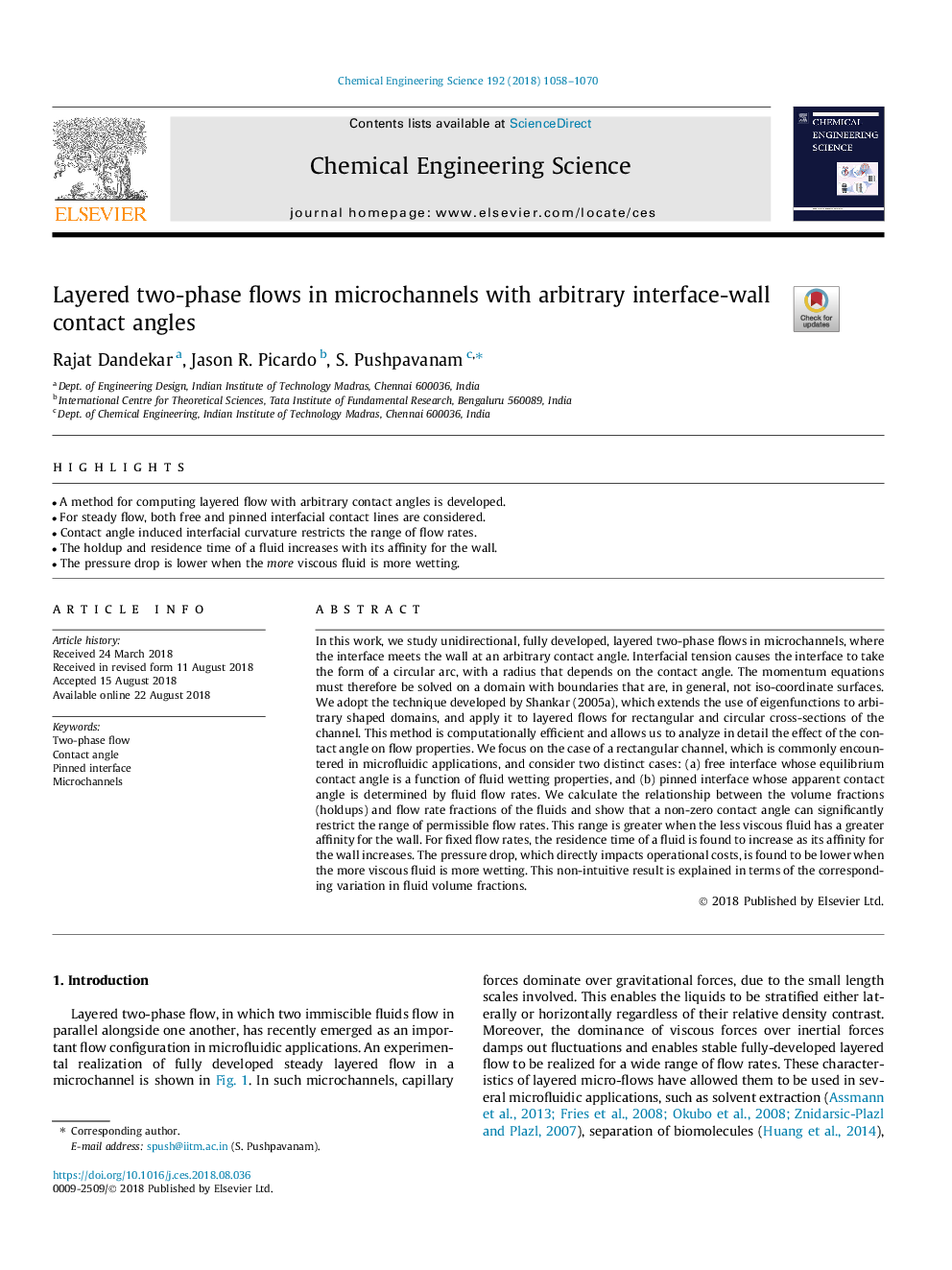| کد مقاله | کد نشریه | سال انتشار | مقاله انگلیسی | نسخه تمام متن |
|---|---|---|---|---|
| 11000281 | 1423227 | 2018 | 13 صفحه PDF | دانلود رایگان |
عنوان انگلیسی مقاله ISI
Layered two-phase flows in microchannels with arbitrary interface-wall contact angles
ترجمه فارسی عنوان
جریان های دو فازی لایه در میکرو کانال ها با زاویه تماس با رابط دیوار دلخواه
دانلود مقاله + سفارش ترجمه
دانلود مقاله ISI انگلیسی
رایگان برای ایرانیان
کلمات کلیدی
جریان دو مرحله ای، زاویه تماس، رابط پین شده، میکرو کانالها،
موضوعات مرتبط
مهندسی و علوم پایه
مهندسی شیمی
مهندسی شیمی (عمومی)
چکیده انگلیسی
In this work, we study unidirectional, fully developed, layered two-phase flows in microchannels, where the interface meets the wall at an arbitrary contact angle. Interfacial tension causes the interface to take the form of a circular arc, with a radius that depends on the contact angle. The momentum equations must therefore be solved on a domain with boundaries that are, in general, not iso-coordinate surfaces. We adopt the technique developed by Shankar (2005a), which extends the use of eigenfunctions to arbitrary shaped domains, and apply it to layered flows for rectangular and circular cross-sections of the channel. This method is computationally efficient and allows us to analyze in detail the effect of the contact angle on flow properties. We focus on the case of a rectangular channel, which is commonly encountered in microfluidic applications, and consider two distinct cases: (a) free interface whose equilibrium contact angle is a function of fluid wetting properties, and (b) pinned interface whose apparent contact angle is determined by fluid flow rates. We calculate the relationship between the volume fractions (holdups) and flow rate fractions of the fluids and show that a non-zero contact angle can significantly restrict the range of permissible flow rates. This range is greater when the less viscous fluid has a greater affinity for the wall. For fixed flow rates, the residence time of a fluid is found to increase as its affinity for the wall increases. The pressure drop, which directly impacts operational costs, is found to be lower when the more viscous fluid is more wetting. This non-intuitive result is explained in terms of the corresponding variation in fluid volume fractions.
ناشر
Database: Elsevier - ScienceDirect (ساینس دایرکت)
Journal: Chemical Engineering Science - Volume 192, 31 December 2018, Pages 1058-1070
Journal: Chemical Engineering Science - Volume 192, 31 December 2018, Pages 1058-1070
نویسندگان
Rajat Dandekar, Jason R. Picardo, S. Pushpavanam,
